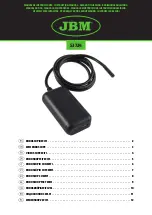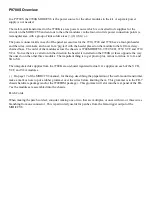
Instruction Manual
K SERIES Cryostorage System
IM: CryoCeK
Revision: 02
Approved by: CB
Page
49
of
87
The LN2 switch 1 may be used to top up the liquid level or for defogging the storage area.
When the fill solenoid valve is active a blue light above the LN2 switch 1 is illuminated.
Before opening the lid the lid switch 3 should be pressed. If the security feature is enabled the
operator will be prompted for a access code.
If no access code or an invalid code is entered and the lid is opened the alarm will be
activated. This will be recorded in the data log as an unauthorised access.
The alarm can be muted in the same way as any other alarm but can only be cleared by
the supervisor entering the correct access code.
7.6 CONTROLLER ALARMS
The alarm settings of the liquid level controller supplied with the Worthington Industries
K SERIES Cryostorage System has been pre-configurated and may be adjusted
depending on the application and installation requirements of the operating company.
A list of the default alarm settings is given in Appendix I
To prevent unauthorised changes to the controller alarm settings
the PASSWORD
PROTECTION option must be enabled and the supervisor
’s code should be changed
from its default setting (see
section 7.3).
Caution should be exercised in setting the various alarm limits to
appropriate values to reduce risk to stored samples while minimising the
occurrence of false alarms.
In particular the settings for Temperature Alarms and the maximum Fill time should be
carefully considered.
If the K SERIES Crostorage System is installed in an unattended location it is
important that use is made of the remote alarm feature:
This will give a global
Alarm signal to a remote location to indicate that prompt attention is required. This might
be an alarm panel which is constantly monitored, or an auto-dialler.
Alarm settings may be restored to their default values via the Engineer menu.
NOTE For further details consult the separate manual (IM1026) or contact Worthington
Industries or your distributor.
All alarms have been defined as ‘High Priority’ and require prompt user/operator
attention.
















































